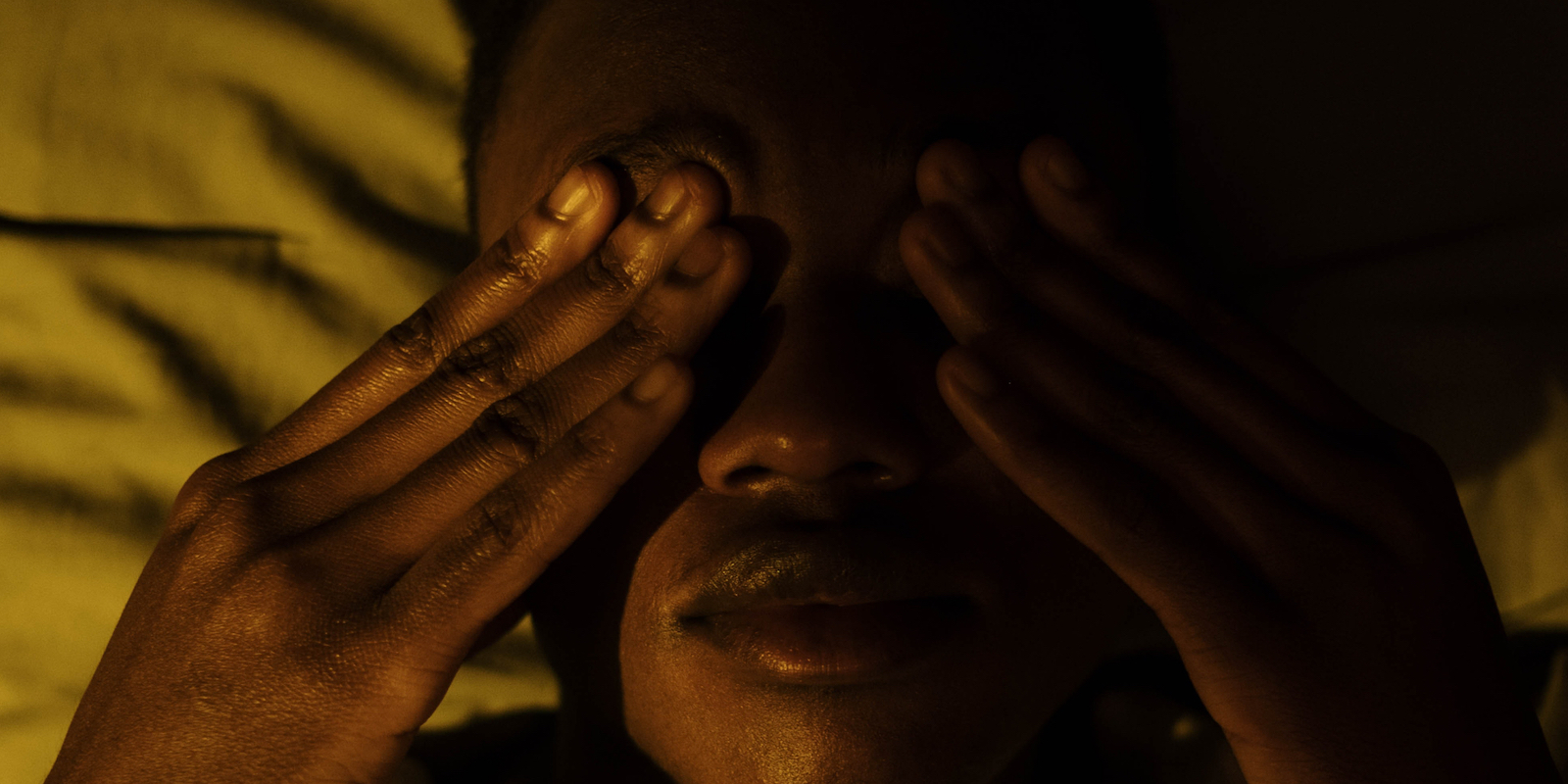We’ve all heard “get in touch with our inner child” at one time or another. Yoga and meditation teachers often invite us to unfold the child inside us. But who is our inner child, and how can we connect with them?
In this article, we explore the inner child’s meaning in psychotherapy and Eastern philosophies and how to heal and reparent this inner child.
Key takeaways
- Your inner child is the part of you that holds all of your childhood emotions and experiences, both positive and negative.
- Mental health experts and philosophers both agree that the inner child can affect your feelings, reactions, and behaviors in adulthood.
- Signs of a wounded child include codependency, people-pleasing, acting rebelliously, or low self-esteem.
- Healing your inner child involves meditation, mindfulness, embracing play, and working with a mental health professional.
For a self-help approach, try this Healing Inner Child & Emotional Processing Meditation with Insight Timer to help you discover what your inner child needs.
What is the “inner child”?
The “inner child” represents the part of us that holds all our childhood memories and emotions, whether positive or negative (like childhood trauma). It’s the experiences we went through as children that shape who we are today.
Psychological researchers believe this inner child’s feelings profoundly impact how we express ourselves and interact with the world as adults. It’s like carrying a little version of ourselves inside, whose experiences continue to influence our feelings, reactions, and relationships long after childhood has passed.
What causes a wounded inner child?
A wounded inner child often results from negative experiences like emotional neglect in childhood, especially when those who were meant to protect and nurture us fail to do so. When children don’t receive the emotional and physical support they need from caregivers, they carry these wounds into adulthood. This manifests as issues in how we see ourselves and interact with others.
Common causes of these wounds include being neglected or mistreated, either physically, emotionally, or psychologically. These experiences can make children feel unsafe and unloved, leading to a wounded inner child that affects their daily lives as adults.
What are the symptoms of an inner child wound?
Symptoms of a wounded inner child show up in various ways in our adult lives. We might find ourselves trying too hard to please others or constantly feeling like we’re not good enough. We may hold onto things more than necessary, struggle with letting go, or act rebelliously during conflicts.
A wounded inner child might also make us highly critical of ourselves and others, striving for perfection in an unhealthy way. We might find it hard to trust people, fear being left alone, and avoid confrontations or setting healthy boundaries. These are signals that your inner child needs attention and healing.

What is inner child work?
Through its call to us, the inner child asks us to help it heal by listening, slowing down, and treating ourselves with compassion and loving-kindness.
More specifically, inner child work involves integrating the parts of us that felt rejected or excluded as we grew up — usually by the caretakers and adults in our lives. By going within, we can access our subconscious and fully acknowledge and accept those shadowy parts.
Looking to connect to your inner child right now? These popular inner child meditations, all available for free in the Insight Timer app, can help you connect with your child-like nature and start healing from within.
- Healing Inner Child & Emotional Processing Meditation Erin Colleen Geraghty 17:58
- Inner Child Healing Meditation: Self Love, Inner Power & Self Worth Affirmations Kenneth Soares 21:45
- Inner Child Meditation for Codependency & Negative Programming Michelle Chalfant 20:00
- Loving Your Inner Child Patty Alfonso 6:35
- Inner Child Meditation Selena Lael 29:02
- Inner Child Healing Oliver Jenkin 40:07
- Remembering The Lost Inner Child Lisa A. Romano 19:36
How do I heal my inner child?
The Buddhist spiritual leader Thich Nhat Hanh has said,
“The cry we hear from deep in our hearts comes from the wounded child within.”
It’s our life’s work to stop, notice, and listen to this child. In his 2010 book, Reconciliation: Healing The Inner Child, Thich Nhat Hanh suggests using mindfulness to listen with compassion to our inner child.
Not only do spiritual leaders support mindfulness for self-care and recovery from childhood trauma, but scientific research also supports the benefits of mindfulness. Below, we’ll cover a few ways to heal one’s inner child, including mindfulness practices.
Mindfulness meditation
One of the most common ways to embrace mindfulness is to meditate.
In Buddhist teachings, consciousness is divided into two parts:
- mind consciousness or active awareness
- root consciousness, similar to the subconsciousness where the inner child resides
We can strengthen our mind consciousness through meditation, thus improving our mindfulness. As mindfulness increases, we better hear our inner child’s call inside us. Noticing and listening is the first step in the process of reconciliation.
Once we recognize the child, Thich Nhat Hanh reminds us to embrace them, take care of them, and reparent them compassionately.
Explore Insight Timer’s collection of free guided meditations specifically for mindfulness.
Loving-kindness meditation
A great way to embrace our inner child compassionately is to approach our whole self with love and kindness. Metta meditation, or loving-kindness meditation, is meditation focused on fostering compassion through phrases or feelings of love, comfort, and joy. Some examples of loving-kindness meditation are:
- Happiness meditation: This meditation focuses on the feeling of happiness, like the feeling of a smile.
- Unconditional love meditation: This meditation helps us embrace love without conditions.
- Guided metta meditation: Adapt and repeat the phrase “May I be happy” to foster universal compassion in this four-minute meditation.
Looking for more meditation options? Find a loving-kindness meditation on Insight Timer that fits your needs.
Inner child meditations
If you need a more direct approach to inner child healing, there are also meditations designed to interact with and heal your inner child. These meditations focus on bringing you to the present moment to eliminate distractions and then helping you find and listen to your inner child.
Try this gentle meditation for getting in touch with your inner child and nurturing the most vulnerable parts of yourself.
Embracing our child-like nature
Embrace your child-like nature to help your inner child express itself and heal. Children are naturally curious and open to learning. They find joy in exploration without attachment to the outcome.
The Dalai Lama is often referred to as childlike. Vancouver’s Dalai Lama Center emphasizes a child’s ability to see themselves as limitless, to dream big, and to focus on their potential and the possibilities of what they can do as desirable qualities of a divine being.
In other words, freeing that inner child can help us approach life with more purity and spontaneity and less attachment to our definition of “self.”
Cognitive behavioral therapy
Cognitive behavioral therapy (CBT) is one of the most recognized approaches to inner child healing.
Childhood thoughts and beliefs can be deep-seated and not immediately apparent, but with training, we can learn to identify and listen to this inner voice. CBT aims to provide nurturing care to this part of our personality, much like a parent would for a child — by offering support and understanding.
In CBT, you learn to challenge these dysfunctional beliefs, set boundaries, and apply logical thinking — which helps you modify the negative thought patterns and address what your inner child needs. This therapeutic process allows you to work through past traumas and negative experiences, leading to emotional healing and healthier adult behaviors.
Other types of therapy, such as internal family systems therapy and eye movement desensitization and reprocessing (EMDR), may also be useful when trying to work through traumatic events that happened to your younger self.
The history of the concept of the inner child
The “inner child” concept has intrigued psychologists and philosophers alike for decades. Understanding this history provides a foundation for exploring how the inner child is perceived and healed across different cultures and therapeutic practices.
The inner child in psychotherapy
The psychologist Carl Jung is most commonly considered the first to have coined the term “inner child.” The divine child archetype is one of many that Jung defined. Rejecting the idea that we come into this world as a blank slate, Jung believed that individuals have predestined “primordial images” within their subconscious.
In popular psychology, the inner child archetype is an unconscious subpersonality that consists of what we learned and experienced in the earliest years of our lives. This inner child personality is subordinate to our conscious mind but still influences it. The influence manifests negatively if our inner child is traumatized, wounded, or anxious.
Jungian psychotherapy teaches us to heal our inner child. Through a process of conscious “reparenting,” psychotherapists assist their patients in recognizing the inner child’s trauma and pain. By compassionately working with this inner child to teach them new behavior patterns, the adult becomes free from the compulsion to act upon the whims of the unruly and hurt subconscious child.
Learn more about the damaging effects of lacking self-love as children throughout adulthood from Psychotherapist Dorothy Ratusny.
The inner child in Eastern philosophies
According to the laws of karma, the unfulfilled desires of our past life compel our rebirth in the present. This cycle also unfolds from moment to moment, as the unmet needs we are unaware of drive our present-moment actions.
The traumatized inner child desires to heal. It needs guidance and loving-kindness from its adult self to learn to trust and feel whole. Until the inner child is healed, our past troubles will continue to reveal themselves. Karma says we are fated to repeat the cycle until we consciously break it. While Jung may have referred to the “hidden subconscious forces” of the inner child, Eastern philosophers note the seeds of karma.
These seeds are stored in our subconscious, and until we replace them by planting positive seeds or liberating them through self-awareness, they will continue to grow and ripen into negative outcomes. We can plant seeds for positive karma by healing our inner child.
The healed inner child
Once we make friends with the child inside us, their enlightened qualities teach us to let go.
When asked to connect with our inner child, we may at first find someone scared, hiding, angry, or lashing out. Through conscious connection and compassionate self-parenting, we allow this inner child to shine with all its innate wonder, curiosity, awe, and potential.
True adulthood and maturity arise when we fully acknowledge, accept, and take responsibility for our inner child.
Learn to appreciate yourself and how to practice self-love every day.
FAQs about the inner child
What is a person’s inner child?
Your inner child is like a younger version of yourself, living within your mind. It reflects all the joys and sorrows you experienced in childhood. Psychological researchers feel this inner part significantly shapes how we express ourselves as adults.
What does healing your inner child mean?
Healing your inner child means reconnecting with the childlike part of yourself that you may have lost touch with as you grew up. This process helps you understand and mend harmful emotional and behavioral habits, enabling you to live a more balanced and fulfilling life.
Insight Timer has many meditations to help heal your inner child.
What does inner child therapy involve?
Inner child therapy involves activities like meditation, mindfulness, and play that aim to reconnect us with the youthful parts of ourselves. This therapeutic approach seeks to help us establish empathic, healthy relationships. The objective is to help us break free from negative patterns and embrace a more positive way of living.
How does one’s inner child impact their adult behavior?
Some researchers believe that your inner child, shaped by childhood experiences, significantly influences adult behavior. Positive experiences lead to healthy well-being, while traumatic ones cause negative emotions and behaviors. Understanding and nurturing your inner child helps address these impacts, promoting a healthier and more balanced life.
How can I nurture my inner child?
To nurture your inner child, create empathetic connections, and build healthy relationships. Engage in playful activities, as the joy of play is vital at every stage of life. Practice meditation and mindfulness to understand and soothe your inner child. Therapy can also offer profound insights and healing.
Disclaimer: This article is for information only and should not be considered as medical advice. If you have questions about any of the conditions mentioned in this article, please consult with a qualified medical professional.
References:
- Davis, S. (2020, July 13). The Wounded Inner Child. CPTSD Foundation. https://cptsdfoundation.org/2020/07/13/the-wounded-inner-child/
- Sjöblom, M., Öhrling, K., Prellwitz, M., & Kostenius, C. (2016). Health throughout the lifespan: The phenomenon of the inner child reflected in events during childhood experienced by older persons. International journal of qualitative studies on health and well-being, 11, 31486. https://doi.org/10.3402/qhw.v11.31486
- Ortiz, R., & Sibinga, E. M. (2017). The Role of Mindfulness in Reducing the Adverse Effects of Childhood Stress and Trauma. Children (Basel, Switzerland), 4(3), 16. https://doi.org/10.3390/children4030016
- Chand, S. P., Kuckel, D.P., & Huecker, M.R. Cognitive Behavior Therapy. [Updated 2023 May 23]. In: StatPearls [Internet]. Treasure Island (FL): StatPearls Publishing; 2024 Jan-. Available from: https://www.ncbi.nlm.nih.gov/books/NBK470241/
- Hestbech, A. M. (2018). Reclaiming the Inner Child in Cognitive-Behavioral Therapy: The Complementary Model of the Personality. American journal of psychotherapy, 71(1), 21–27. https://doi.org/10.1176/appi.psychotherapy.20180008
- Valiente-Gómez, A., Moreno-Alcázar, A., Treen, D., Cedrón, C., Colom, F., Pérez, V., & Amann, B. L. (2017). EMDR beyond PTSD: A Systematic Literature Review. Frontiers in psychology, 8, 1668. https://doi.org/10.3389/fpsyg.2017.01668





-1.jpg)


